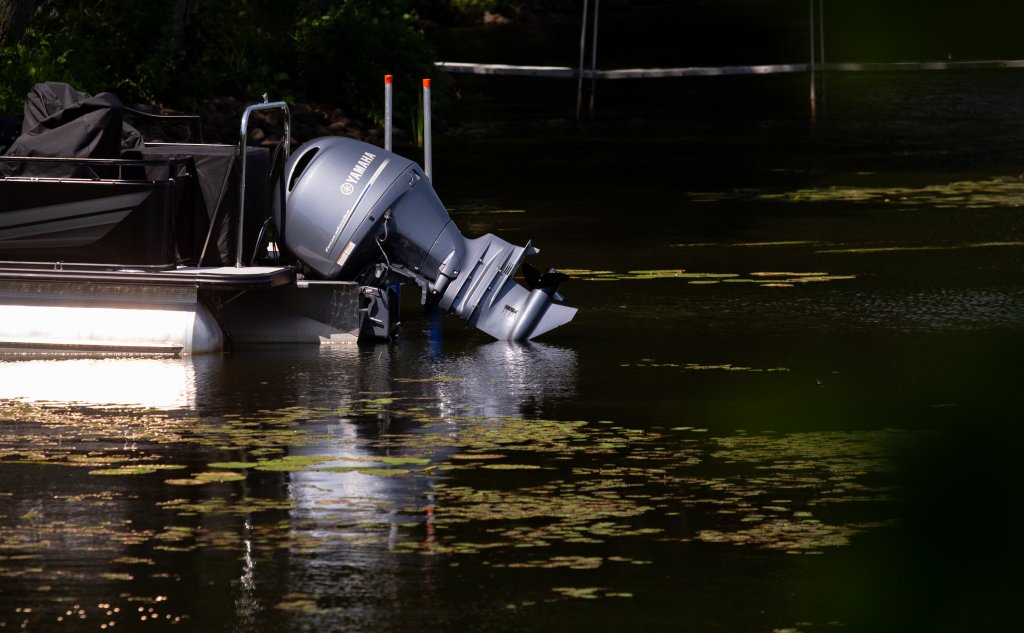
Five years ago, it was just a thin green carpet of wiry grass spreading under trees in the wilds of Georgetown. Today, Japanese stiltgrass has become a much bigger concern. Ecologists warn that the plant produces thousands of seeds, crowds out native wildflowers and seedlings, alters the soil, and leaves brittle thatches, raising the risk of wildfire.
Now, the invasive species can be found in about six different spots with several more suspected. State officials are urging Mainers to report the thatches before the grass spreads further.
But Japanese stiltgrass is just one of the newest arrivals in what state officials say has become an unending race against invasive species.
From vines that climb 6 inches a day to beetles that hollow out entire stands of ash trees, Maine’s forests, lakes and wetlands are under siege from a growing list of plants and pests.
Altogether, these invasive species threaten to reshape habitats and eliminate the very landscapes that define Maine, disrupting industries like logging and Christmas tree farming, and limiting outdoor recreation.
“Every invasive species we track comes with its own set of problems, and the list is only getting longer,” said Chad Hammer, invasive plant biologist with Maine’s Natural Areas Program. “Maine has all the ingredients invasives need: wetlands, forests, disturbed soil, and a changing climate. Once something gets introduced, the conditions are right for it to spread.”
PLANTS ON THE MARCH
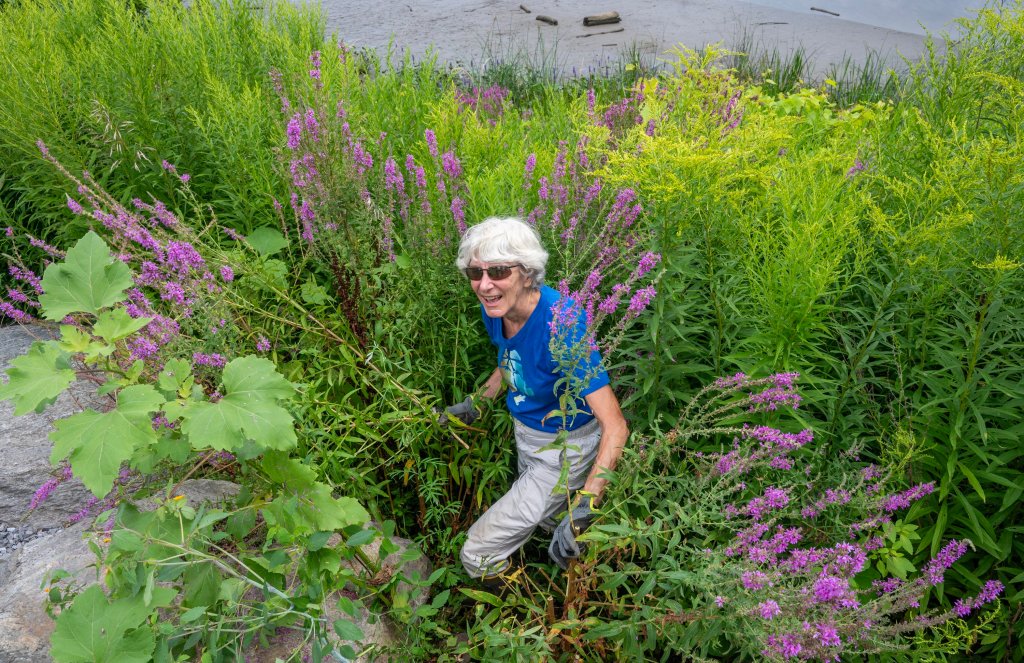
At the northern edge of New England, Maine is particularly vulnerable to new arrivals, Hammer said. He pointed to warmer winters, which allow plants and insects typically found in southern states to travel north, and an increase in storm frequency , which washes out and erodes soil, creating openings that invasive species can exploit.
Climate change, in other words, amplifies the pressures brought with nonnative species by further destabilizing ecosystems, tipping the balance in favor of invasives.
Early detection is critical for landowners, said Nancy Olmstead, a conservation biologist with The Nature Conservancy. The organization’s staff is trained in invasive plant identification during seasonal monitoring, while land managers map infestations to prioritize control efforts, Olmstead said.
With over 300,000 acres in its ownership, and nearly 2.5 million acres in Maine protected, understanding where invasive species are taking hold is key to making effective management decisions.
Individual landowners and recreationists can also keep an eye out for invasive species and report them accordingly, Olmstead said.
While stiltgrass is experts’ main focus at the moment, other species are already well ahead in their spread.
Japanese knotweed, an ornamental plant, crowds riverbanks with bamboo-like walls that choke out nearly all native plants. Glossy buckthorn, another ornamental, has infiltrated wetlands and forests with the help of birds that carry its seeds far from yards. Purple loosestrife has transformed wetlands across the state into monocultures: areas where the invasive establishes itself exclusive to other plants.
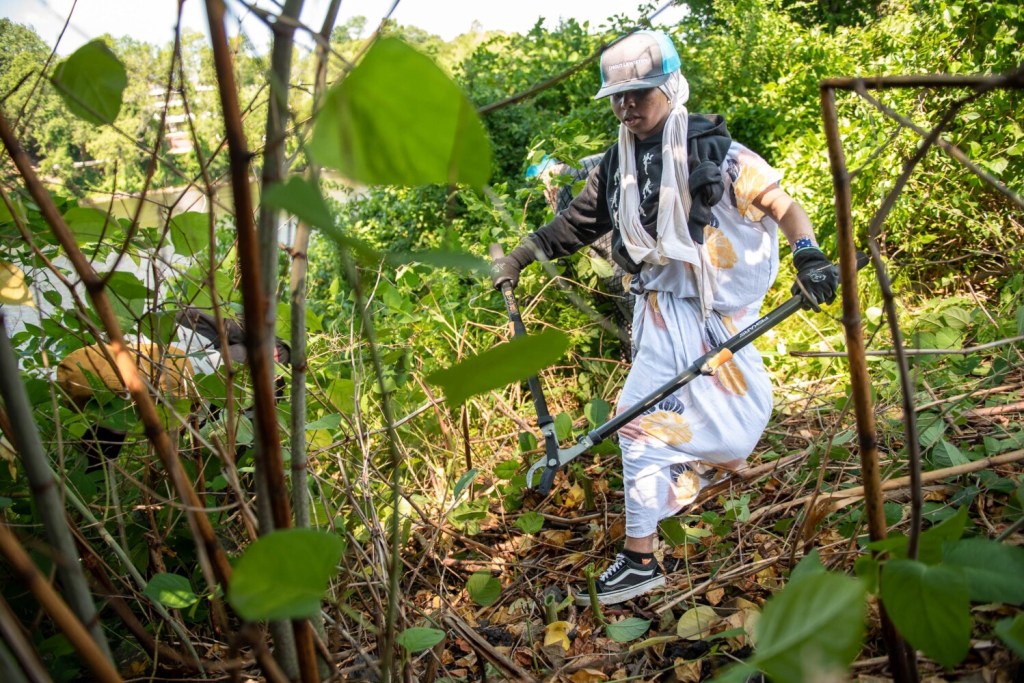
Once here, they easily spread throughout the state.
“Maine has millions of stream miles and wetlands,” Hammer said. “Every one of those can serve as a corridor for spread. Once knotweed or buckthorn get into a wetland system, they don’t stop at the edge of the property — they move downriver, across towns, across counties.”
Potential threats like Mile-a-Minute vine have been caught just in time. The annual vine grows up to 6 inches a day and can span 20-25 feet in a season, Hammer said. The plant was first detected in gardens in 2023 and experts were able to remove small infestations by hand-pulling the vines, preventing it from spreading further. Officials are hoping quick action will keep it off the landscape altogether, he said.
When invasive species are not kept out, Maine’s landscape pays the price.
“These are not isolated problems,” Hammer said. “Each invasion adds pressure to ecosystems already stressed by climate change, pests and land use. Together, they raise real questions about what Maine’s woods and wetlands will look like in another 50 years.”
BUGGING OUT
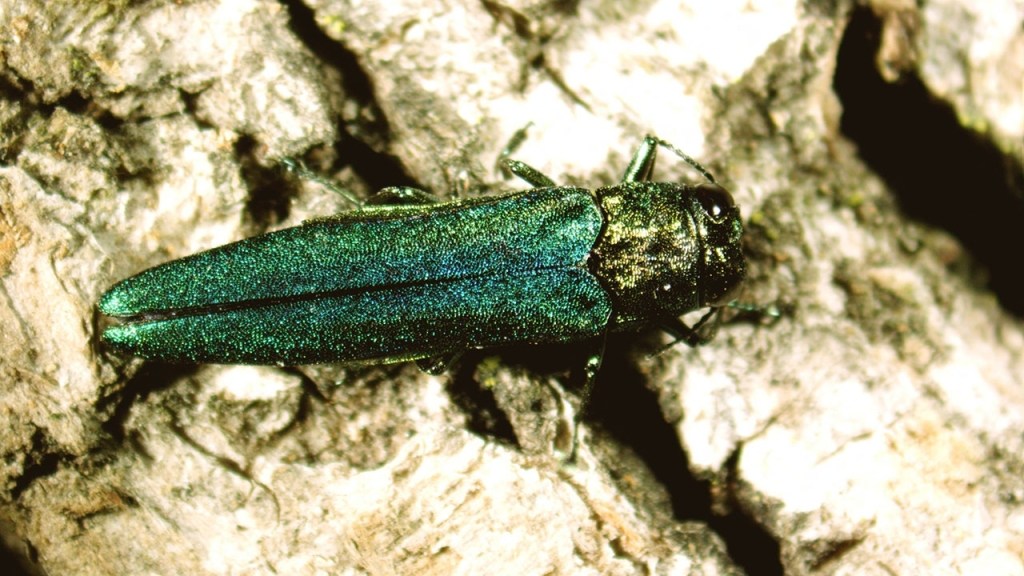
It isn’t just plants crowding out their neighbors. Insects and diseases like the emerald ash borer and hemlock woolly adelgid contribute to the elimination of tree species as forests change composition over time.
Maine Forest Service forest entomologist Michael Parisio said that, just as with invasive plants, early awareness is the best tool against these pests.
“Once (emerald ash borer) arrives on your doorstep, you do have a limited amount of time to figure out what your response is going to be,” he said, noting that ash trees make up about 2% of Maine’s forests.
Despite the tree’s relatively small footprint in Maine’s forests, the species can be heavily affected by emerald ash borers when present in concentrated stands. Infestations can wipe out pockets of ash within a few years, which has left landowners little room to act and municipalities weighing the cost of removing dead trees against expensive preventive treatments.
Parisio said chemical trunk injections are one method of protection against emerald ash borers that does not heavily impact surrounding organisms.
But it’s human activity, like moving firewood, that accelerates spread. Firewood movement is one of the actions the state is trying to manage with quarantines and public outreach, but enforcement can only go so far, he said.
Parisio also highlighted the threat posed by hemlock woolly adelgid and balsam woolly adelgid, pests typically found in Maine’s coastal areas due to moderate winter temperatures.
“But with warmer and more unpredictable winters, they’re gradually moving inland,” he said.
In forested areas, hemlock woolly adelgids spread through infested twigs and canopy material, making the movement of top branches and chips high risk. Balsam woolly adelgids feed in the upper canopy, can cause long-term tree deaths and reduce seed stock for future restoration.
Balsam firs, harvested for Christmas trees, are ecologically and economically vulnerable.
Adelgids are generally species-specific, and their slow, landscape-level impacts can go largely unnoticed until infestations are widespread. Monitoring and early reporting are critical to slowing their advance.
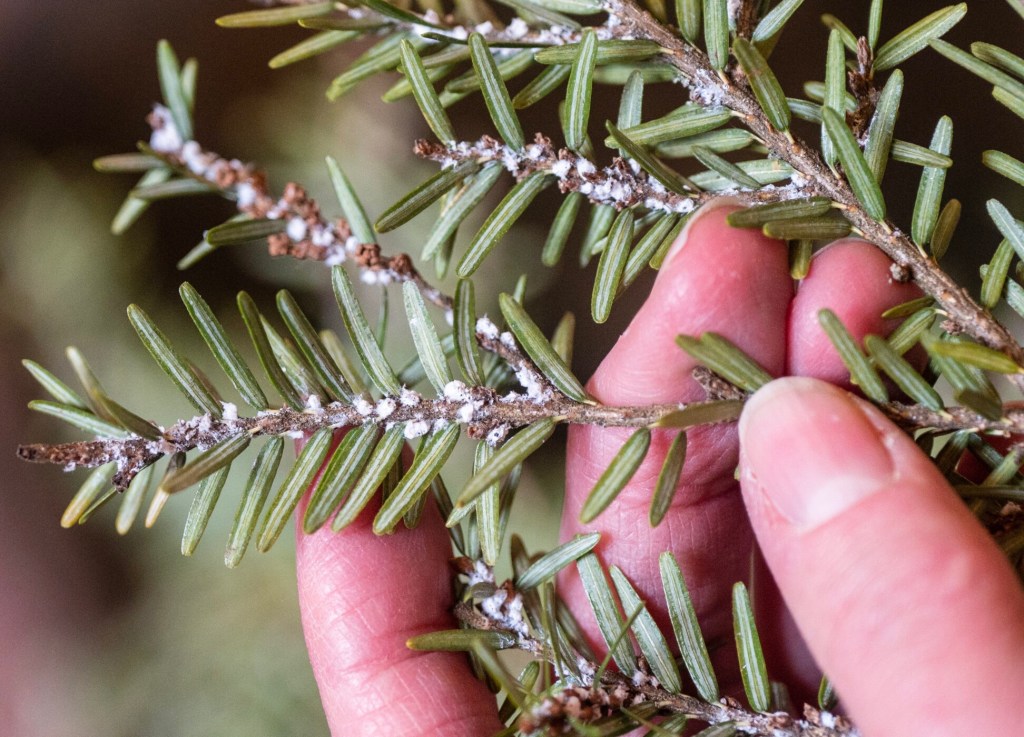
“Managing invasive insects isn’t just about reacting when a tree is dying. It’s about preparing, monitoring and applying targeted controls before a problem becomes irreversible,” Parisio said.
Keeping a lookout for “lingering trees” — those that haven’t succumbed to pests or disease — landowners and scientists can preserve seeds for future restoration efforts and forest resilience, Parisio and Olmstead added.
“If scientists have any hope of … breeding resistant trees, they’ve got to have the seed stock from resistant trees,” Olmstead said.
Pests like winter moth caterpillars, spongy moths and blights like beech leaf disease are also reshaping Maine’s forests as threats compound each other, Olmstead said. If invasive insects kill the tallest trees in an area, invasive plants may fill the gaps and prevent forests from regenerating naturally.
“The concern is that (invasive species) compound each other, and the combined effects are worse than the effects independently,” she said.
IN THE WATER
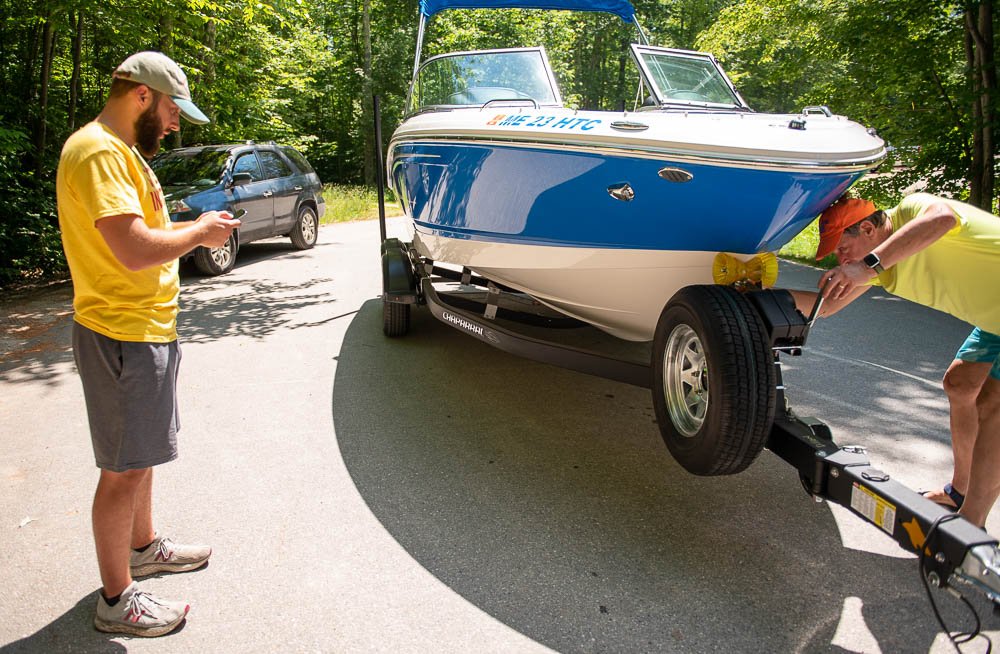
In addition to terrestrial threats, aquatic invasive plants are a growing concern. Toni Pied, who works with the Maine Department of Environmental Protection’s Aquatic Invasive Species Program, explained that, much like some terrestrial invasive plants, humans are the main spreaders for invasive plants in lakes and streams. Watercraft and equipment can carry seeds or fragments of plants that, after introduced, can establish new infestations.
Among the 15 species Maine law has prohibited, hydrilla, variable-leaf milfoil and Eurasian watermilfoil are some of the most worrisome. Each species has the potential to form dense mats on the water’s surface, choking out native plants and diminishing habitats for fish and other aquatic creatures.
Prevention is crucial and simple, Pied said: Clean, drain, dry.
“Clean plant debris, mud and any organisms from all boating, fishing and hunting gear and dispose of them in the trash,” she said. “Drain live wells, bilge water and engine water away from waterbodies. Dry any gear that comes into contact with water.”
With over 6,000 lakes and ponds, and as a prime vacation destination, Maine is extremely vulnerable to infestations. Even a fragment of milfoil on the hull of a boat or on a trailer is all it can take to establish a colony, and even a small infestation can have significant impacts on a body of water, Pied said.
Biodiversity declines as invasives crowd out native species, and activities like boating and swimming are impacted by surface vegetation, all of which can affect property value. Some water bodies in Maine have already reached these tipping points, making them difficult, sometimes impossible, to fully eradicate.
Hammer, Olmstead, Parisio and Pied noted that residents can play a role in protecting Maine’s natural landscapes. Learning to identify invasive plants, reporting suspicious sightings, and volunteering with local conservation groups can all help slow the spread.
“Becoming familiar with the plants on our list and notifying us if they see something suspicious could mean catching something early and giving us a chance to eradicate something before it becomes too big of a problem,” Pied said.

We invite you to add your comments. We encourage a thoughtful exchange of ideas and information on this website. By joining the conversation, you are agreeing to our commenting policy and terms of use. More information is found on our FAQs. You can modify your screen name here.
Comments are managed by our staff during regular business hours Monday through Friday as well as limited hours on Saturday and Sunday. Comments held for moderation outside of those hours may take longer to approve.
Join the Conversation
Please sign into your CentralMaine.com account to participate in conversations below. If you do not have an account, you can register or subscribe. Questions? Please see our FAQs.